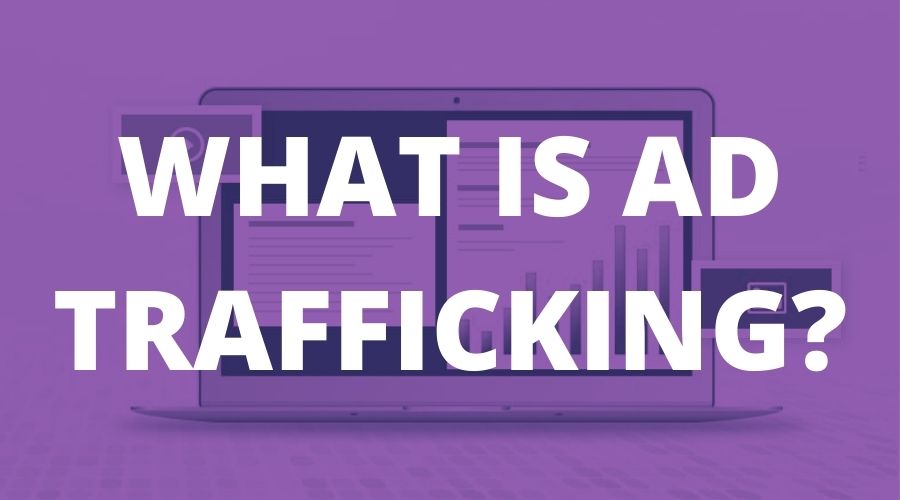
This post was most recently updated on March 11th, 2025
In this comprehensive guide, we will delve into the world of ad trafficking and its significance in programmatic advertising. Ad trafficking is a fundamental process that ensures advertisements are correctly delivered to the right audience at the right time.
This article will explore the ins and outs of ad trafficking and how it impacts online advertising campaigns. Our goal is to equip you with the knowledge to effectively manage and optimize ad trafficking, resulting in improved performance and ROI for your advertising efforts.
Ad trafficking is the process of setting up and managing online advertisements within ad servers, ad networks, or demand-side platforms (DSPs). The ad trafficking team plays a crucial role in the successful execution of digital ad campaigns. They handle various components of the ad setup, including ad creatives, targeting parameters, delivery schedules, and tracking mechanisms.
Ad trafficking is more than just getting an ad to run, it is the backbone of online advertising. It ensures that ads are displayed to the right audience, in the right context, and at the right time. This process directly impacts the effectiveness of an ad campaign. An ad displayed to an irrelevant audience or at the wrong time may result in wasted impressions and budget.
It is all about getting the campaign to run in the most effective way possible, providing maximum returns for the publisher, and satisfying advertisers. Ad placement, campaign type, creative layout, targeting, and competition are among the multiple factors an ad trafficker will consider when setting up a campaign.
Before you even start trafficking a campaign, it’s important to understand what advertisers are looking for. When advertisers design an ad to be used online, they want as many people with an interest in their field to be shown the ad. Users who are not in the target market for the advertised product are considerably less likely to engage with the ad, or learn about or buy the product advertised.
Advertisers want their products to be shown on credible, well-designed sites, with a wide user base. Integration of ads with content should be appealing visually, and the user should have an enjoyable experience browsing your site and reading the content. This encourages longer dwell times on-site and a greater chance for the advertisers’ products to be seen. All these factors will increase the amount of money an advertiser is willing to pay to have their ad shown on your site.
The ad trafficking team is responsible for managing ad creatives. This involves uploading and testing different ad formats, such as display banners, video ads, or interactive rich media. They ensure that creatives comply with the platform’s guidelines and maintain the highest visual quality to attract users’ attention effectively.
Precise audience targeting is essential for maximizing the impact of an ad campaign. Ad traffickers set up targeting parameters based on factors like demographics, interests, behavior, location, and device type. A well-defined audience segment helps in reaching the right users, enhancing engagement and conversion rates.
Efficient ad delivery is crucial to ensure ads are displayed promptly and to avoid under-delivery or over-delivery issues. The ad trafficking team optimizes delivery settings, ad rotations, and frequency capping to balance exposure while preventing ad fatigue.
Ad traffickers implement tracking mechanisms, such as pixels or tags, to monitor ad performance. They analyze key metrics like impressions, clicks, conversions, and viewability to evaluate campaign success. Regular reports provide valuable insights for optimization.
Most ad traffickers will use Google Ad Manager at some point, if not exclusively. Ad Manager is an ad server, a comprehensive online tool that helps you organize your ad campaigns and inventory, target ads to where they are most profitable, and report on the results.
Ad Manager is quite daunting at first; so daunting we made our own Ad Manager certification course over at PubGuru University. The course gives you the knowledge to run campaigns and organize your ad slots and feel confident that you’re on top of what’s happening when a user visits your site.
It’s important to know that Ad Manager doesn’t supply ads itself. It can only serve the ads you give it, whether they are ads from advertisers directly, a third-party ad network, Google’s own AdSense, or some other ad technology. Payments will be handled externally and the ad trafficker will need to verify that the impressions declared and money paid by external vendors matches the totals in Ad Manager with minimal discrepancies.
We often get questions from those starting out, and a common one is ‘Where do I get the ads from?’.
Most publishers are aware of or use Google AdSense. Depending on the site you’re running, it’s easy to set up and easy to work out what you’ve earned, and AdSense access also gets you access to Ad Manager. AdSense is of course not the only source of ads; publishers use existing relationships with clients to serve direct ads, set up agreements with other third-party ad networks, and as they grow, also consider advanced ad technologies such as header bidding or programmatic.
In all cases though, the consideration of how to place the ads on the page, how to target them to the most appropriate pages and how to reach the most lucrative users is all within the remit of the ad trafficker. Ad traffickers are expected to maximize the revenue for the publisher as well as provide the best value to the advertiser.
Test environments are useful here to plan out the proposed layouts, and how they fit with the content. Split testing should also be considered, showing a proportion of live users the new layout and comparing the results with the old layout or alternatives.
Ad traffickers also provide updates for the advertisers in terms of reporting. This is important so that both the trafficker and advertiser can make changes to the campaign, or any aspect of it that isn’t performing as intended. For example, certain creatives may not be performing as well as others, or frequency capping rules are hindering delivery.
Before launching an ad campaign, thorough testing and quality assurance are essential. Ad traffickers need to check creatives for functionality, responsiveness, and compatibility across various devices and browsers. Rigorous testing ensures a seamless ad experience for users.
Ad trafficking involves continuous monitoring and real-time optimization. Adjustments may be required to improve performance and achieve campaign goals. A/B testing can be employed to compare different creatives or targeting strategies.
Ad trafficking teams must be vigilant against ad fraud. Implementing fraud prevention measures, such as ad verification services, helps maintain ad campaign integrity and ensures legitimate impressions and clicks.
In conclusion, ad trafficking is a vital process that underpins successful digital advertising campaigns. Understanding its significance and implementing best practices can greatly impact the effectiveness and efficiency of your ad campaigns.
MonetizeMore’s programmatic monetization suite allows publishers to combine their programmatic and direct ad inventory and maximize ad revenue while delivering the best user experience.

With over ten years at the forefront of programmatic advertising, Aleesha Jacob is a renowned Ad-Tech expert, blending innovative strategies with cutting-edge technology. Her insights have reshaped programmatic advertising, leading to groundbreaking campaigns and 10X ROI increases for publishers and global brands. She believes in setting new standards in dynamic ad targeting and optimization.
10X your ad revenue with our award-winning solutions.